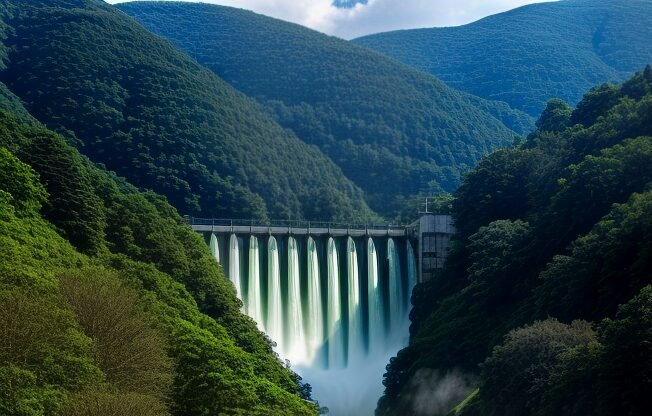Hydroelectric energy harnesses the power of moving water, such as rivers or reservoirs, to generate electricity cleanly and sustainably. It is a key renewable source due to its low environmental impact and energy storage capacity.
Common technologies in the hydropower industry include large-scale plants, micro-hydropower systems, and pumped-storage hydropower plants. Micro-hydropower is gaining traction in rural and remote areas where decentralized energy solutions are needed. Meanwhile, pumped-storage plants, which act as giant batteries by storing energy during periods of low demand, are increasingly implemented to complement intermittent sources like solar and wind. Additionally, advanced turbines, such as free-flow turbines, are being developed to minimize impacts on aquatic wildlife while enabling efficient generation without requiring large dams.
Production Costs and Capacities:
The average cost of hydropower generation ranges from $0.02 to $0.10 per kWh, making it one of the most cost-effective options in the long term. Initial construction and installation costs for hydropower projects can range between $1,000 and $5,000 per kW installed, depending on the scale and location of the project. In terms of capacity, large hydropower plants, such as the Three Gorges Dam in China with a capacity of 22,500 MW, demonstrate the potential of this technology to meet significant energy demands. Globally, hydropower accounts for approximately 16% of electricity generation, establishing itself as a cornerstone in the transition to a clean and sustainable energy system.


